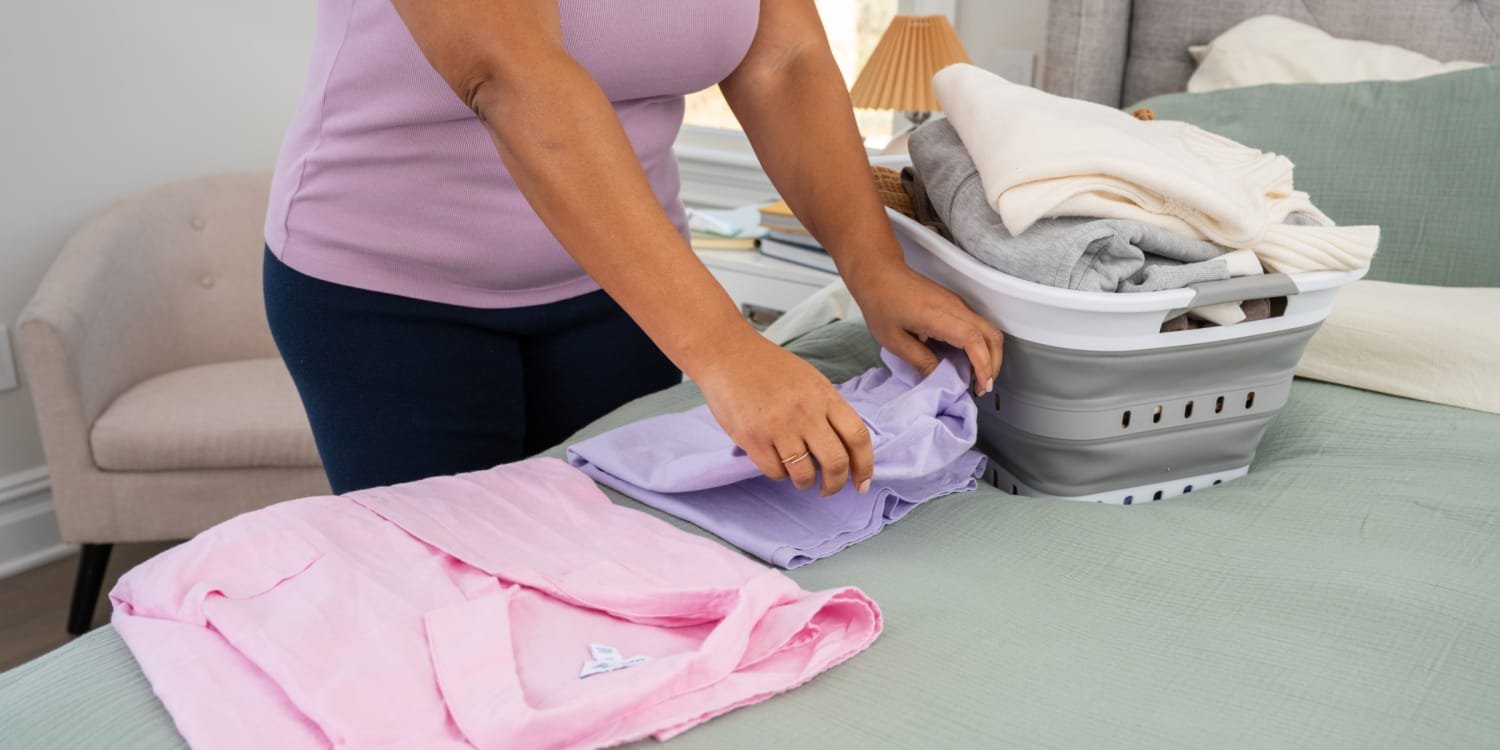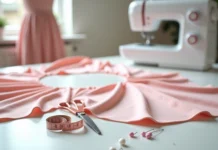I’ve ruined expensive shirts before just by folding them wrong. Sharp creases made them look worn before I even put them on. Clothes wrinkle because folds trap tension in the fabric, and some materials crease more than others. In this guide, I’ll show you the exact folding and packing methods I use to keep clothes smooth. These steps work at home and when traveling. By following them, you’ll save time, protect delicate fabrics, and always look presentable.
Why Clothes Wrinkle After Folding?
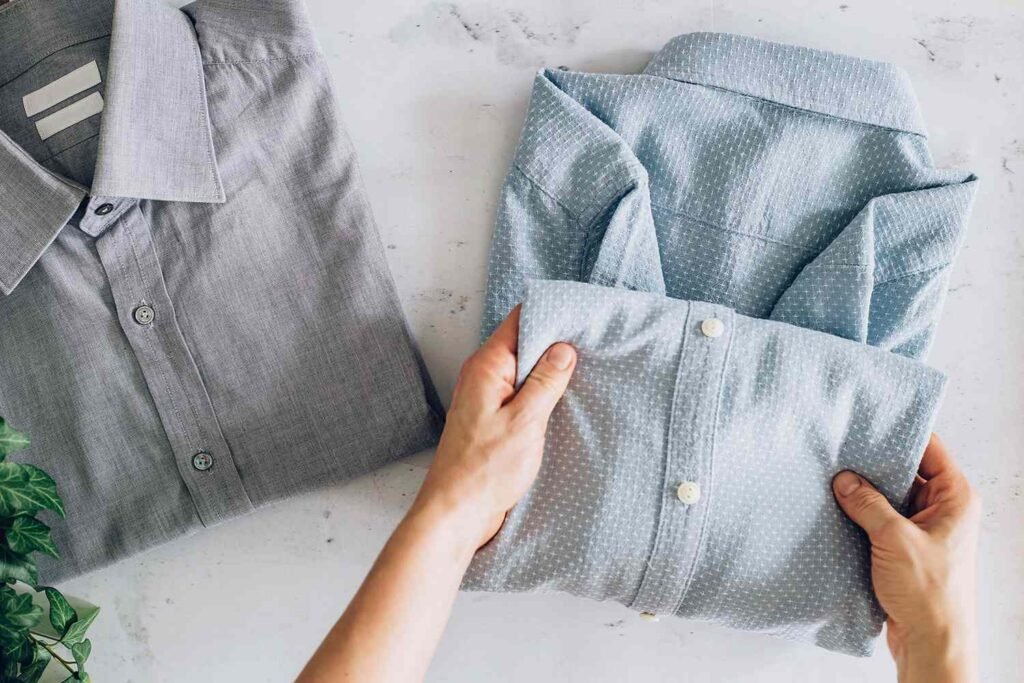
Clothes wrinkle after folding because sharp bends create stress points in the fibers. These points lock the fabric in place until heat or moisture releases them. Cotton and linen crease the fastest, while polyester, wool blends, and some synthetics hold their shape better.
Fabric Types That Wrinkle Easily
Cotton is breathable but its natural fibers bend easily, which is why shirts and trousers wrinkle quickly. Linen is even more prone to deep creases because of its stiff texture.
Fabrics That Resist Wrinkles
Polyester and spandex blends bounce back into shape, making them good options for travel. Wool blends resist wrinkles too, as their fibers spring back naturally.
Everyday Analogy
Think of paper. Fold it once and a line appears. That line stays until you press it out. Clothes behave the same way.
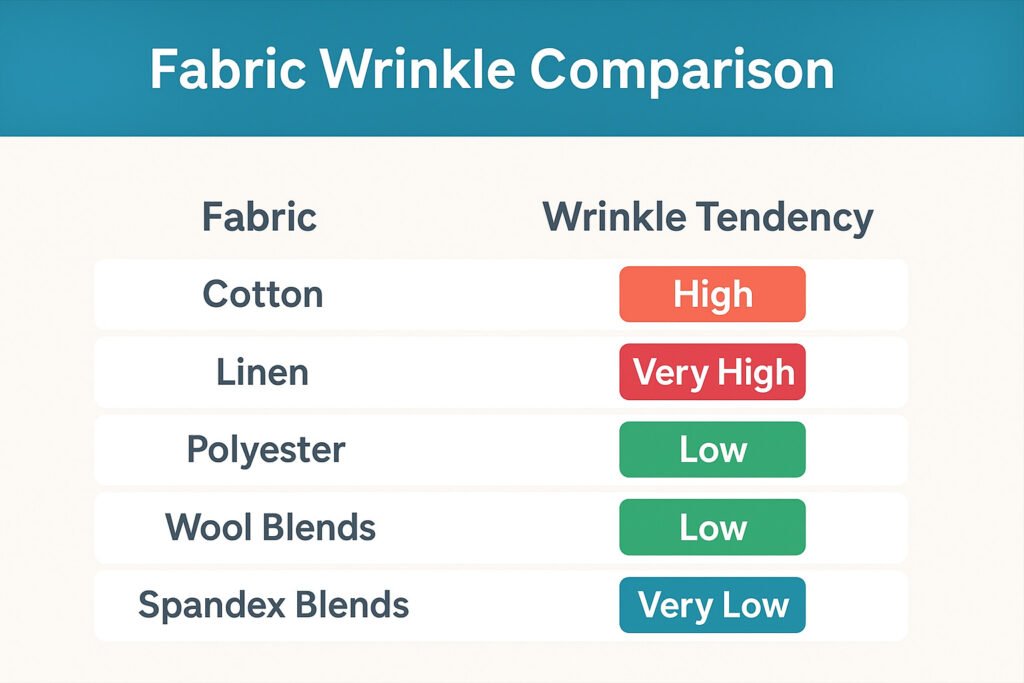
Best Folding and Packing Techniques to Keep Clothes Smooth
Rolling clothes is one of the easiest ways to keep them smooth while saving suitcase space. Instead of creating sharp folds, rolling forms soft curves that don’t trap deep creases. It works best for t-shirts, dresses, casual wear, and gym outfits. Here’s the process: lay the item flat, smooth out any wrinkles, fold sleeves inward, and roll tightly from the bottom up. Rolled clothes also fit neatly into packing cubes, making travel easier.
Bundle Wrapping: Protects Delicate Items
Bundle wrapping is perfect when you’re packing delicate fabrics like silk or linen. This technique reduces folds by layering clothes around a bulky core, such as a sweater or jacket. Place heavier items inside, then wrap lighter, more fragile clothes on the outside. I rely on bundle wrapping for my silk shirts when I travel—they consistently arrive wrinkle-free.
KonMari Folding Method: Perfect for Storage
At home, the KonMari folding method keeps clothes both neat and wrinkle-free. Clothes are folded into upright rectangles, so they stand vertically in drawers. This reduces crushing from stacked piles and makes it easy to see every piece at a glance. To do it: fold lengthwise, fold again into a rectangle, then stand upright.
Using Tissue Paper and Plastic Dry Cleaning Bags
Friction is one of the biggest causes of wrinkles. Placing tissue paper between clothes or slipping delicate garments into dry cleaning bags reduces that friction. The tissue cushions folds, while the plastic prevents fabrics from pressing into each other. I tried this with a silk dress, and it stayed perfectly flat.
How to Pack Specific Items Without Wrinkles

Shirts and Blouses
Shirts and blouses wrinkle quickly if folded carelessly, but a small adjustment makes a big difference. Always button them before folding this keeps the fabric aligned and prevents shifting. Lay the shirt flat, smooth it out with your hands, and fold each sleeve straight across the back. Next, fold the shirt lengthwise into thirds so it stays flat and compact. This method avoids deep creases on the front panel, keeping collars and cuffs crisp.
Step-by-step folding guide for shirts and blouses:
- Button up the shirt completely.
- Lay it face down on a flat surface.
- Fold sleeves inward across the back.
- Fold the shirt lengthwise into thirds.
- Place flat on top of heavier clothing or in a packing cube.
Pants and Trousers
Pants and trousers often develop harsh horizontal creases when folded incorrectly. The trick is to reduce the number of folds. Start by folding pants lengthwise so the seams align. From here, fold them once or twice depending on how much space you have. If your luggage is tall enough, a single fold is best—it minimizes creases along the legs. For wool trousers or dress pants, slip a sheet of tissue paper between the folds for extra protection.
Pro tip: Place pants at the bottom of your suitcase so they stay flat under lighter items.
Dresses and Formal Wear
Dresses require special care because they come in so many fabrics and lengths. Soft, casual dresses like cotton or jersey can be rolled to save space without trapping deep wrinkles. For more structured or formal gowns, layering tissue paper inside folds prevents creases. Expensive or delicate pieces, such as silk or satin dresses, should go in garment bags for maximum protection.
Dry cleaning professionals emphasize this step. According to the Dry Cleaning & Laundry Institute, garment bags are one of the most effective ways to prevent wrinkles during travel, especially for evening gowns and formal wear. If you’re flying, consider a carry-on garment bag with a hanging option to keep dresses untouched until you arrive.
Quick Wrinkle Fixes at Your Destination
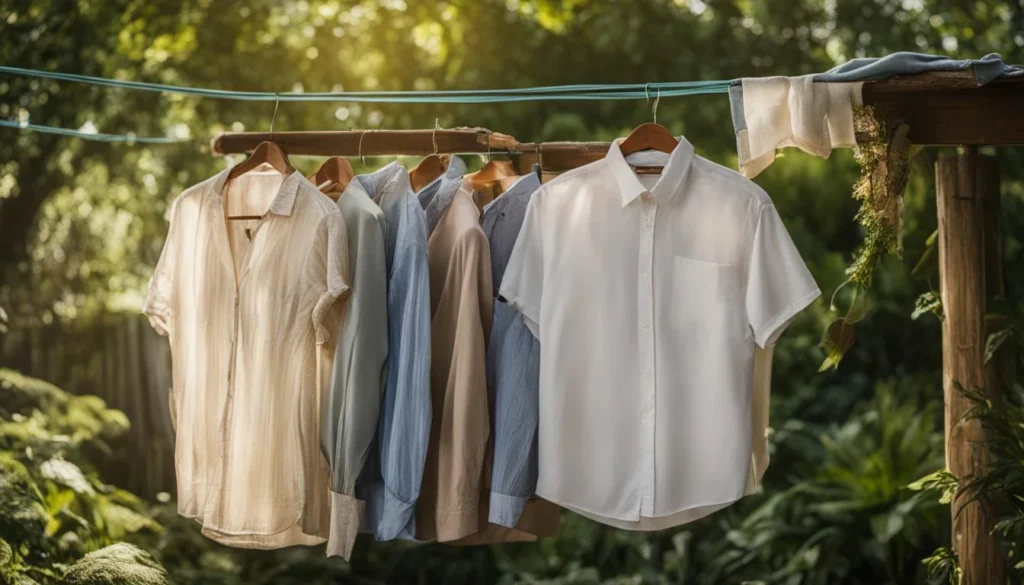
Unpack and Hang Clothes Fast
The best way to stop wrinkles after a trip is to unpack as soon as you arrive. Hanging clothes right away lets gravity work to release minor creases. A shirt left in a suitcase for hours will always look worse than one quickly moved to a hanger.
Use Steam from a Shower
Steam is one of the easiest wrinkle fixes. Hanging clothes in the bathroom while running a hot shower loosens fabric tension, letting folds relax naturally. I’ve saved more than a few shirts this way before heading into last-minute meetings.
Pro tip: Keep some space between clothes and the shower to avoid water spots.
Wrinkle-Release Spray
Wrinkle-release spray softens fibers, making small creases fade fast. It’s best for light wrinkles on cotton, blends, or travel knits—not for deep-set folds. Just spray lightly, smooth the fabric with your hands, and let the piece air dry for a few minutes.
Portable Travel Steamer
A compact travel steamer is the most reliable way to remove wrinkles quickly. It works well on cotton, silk, and linen without damaging fibers. I always pack mine for business trips—it’s saved me before client dinners and formal events.
According to a recent travel gear survey, portable steamers rank among the top five best-selling travel gadgets, showing how many travelers rely on them for fast fixes.
Storing Clothes Properly at Home

Flat Surface Folding
Always fold clothes on a flat, clean surface. It keeps edges aligned and prevents uneven pressure that causes wrinkles. A bed or table works better than folding straight from a laundry basket.
Don’t Overfill Drawers
Stuffed drawers press clothes together until deep creases form. Leaving space allows air to circulate and fabrics to settle naturally. Think of it like stacking pancakes—too many, and the ones at the bottom get squashed.
Use Dividers and Boxes
Drawer dividers and storage boxes keep stacks separated. This reduces shifting, keeps piles from toppling, and prevents pressure wrinkles. It also makes grabbing what you need easier without disturbing the rest.
How to Fold Clothes to Avoid Wrinkles
The best ways to avoid wrinkles are rolling clothes or using bundle wrapping. Rolling works well for shirts and casual clothes. Bundle wrapping is better for delicate fabrics like silk.
To prevent wrinkles, fold clothes with as few creases as possible or roll them tightly. Smooth out wrinkles before folding, fold sleeves back, and use tissue paper if needed. After unpacking, hang clothes or use a wrinkle spray to remove any leftover creases.
How to Stop Clothes from Wrinkling
To reduce wrinkles choose wrinkle-resistant fabrics and avoid overloading your washer or dryer. Use the right cycle settings remove clothes as soon as they’re dry and hang or fold them right away. Store clothes with enough space in your closet. For quick wrinkle removal use a wrinkle-release spray or hang clothes in a steamy bathroom.
Conclusion
Keeping clothes wrinkle-free isn’t complicated—it’s about using the right method for the right fabric. Rolling helps for travel, bundle wrapping protects delicate items, and KonMari folding works best for drawers at home. Adding tissue or plastic layers gives extra protection when needed.
If you treat your clothes with care from the start, you’ll avoid the frustration of ironing later. I’ve found that once you start folding and packing this way, your outfits always look ready to wear. Try these techniques, and your clothes will thank you.


